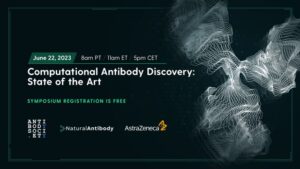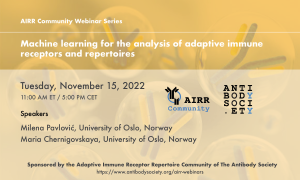Did you miss the Computational Antibody Discovery Symposium held on June 22?
On Demand videos are now available on YouTube!
- Introduction by Janice Reichert (The Antibody Society); Konrad Krawczyk (Natural Antibody); Andrew Buchanan (AstraZeneca), and
the first speaker: Pietro Sormanni (University of Cambridge). Third-generation approaches of antibody discovery and optimization - Tzvika Hartman (Biolojic Design). AI-driven design of smart therapeutics
- Sandeep Kumar (Boehringer Ingelheim). Biopharmaceutical Informatics: Syncretic use of computation and experimentation in discovery and development of biotherapeutics
- Ben Holland (Antiverse). Machine learning-based design of antibodies against difficult targets
- Panel discussion summary: Panelists provided their opinions and insights on these questions:
What properties are more urgent to be able to design in silico – binding specificity, developability or something else?
What performance should computational antibody design achieve to improve upon established protocols?
What are the biggest hurdles for computational antibody discovery to achieve its full potential (models, data or something else)?
How could industry and academia complement each other to solve the problem of computationally designing antibodies?
What role does big tech/biopharma have to play in development and adoption of computational antibody design paradigms? - Concluding remarks (Andrew Buchanan, AstraZeneca)
The complete playlist is here.
Please note: Victor Greiff presented unpublished material; posting of the video of his talk will be delayed. Please subscribe to our YouTube channel to receive an alert when new videos are added.
Thank you for your interest in the Symposium. We hope the videos inspire useful discussions in the future.




